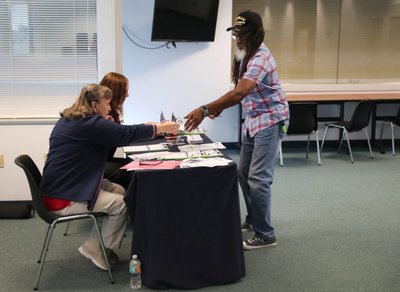This lesson is part of our Searching for Justice series on criminal justice reform. It was originally posted Dec. 11, 2020.
For a Google doc version of this lesson, click here . (You will need to make a copy of the doc to edit it.)
Overview:
Individuals convicted of felonies face numerous punishments beyond serving time in jail or prison. Federal and state governments have enacted a large number of additional restrictions on formerly incarcerated individuals. This lesson focuses on
felony disenfranchisement
(restrictions on the right to vote) and describes other “collateral consequences,” or punishments and restrictions beyond prison. Students will explore a number of digital resources, including an article, a video and interactive websites to analyze restrictions that people convicted of felonies face.
Subjects:
U.S. History, U.S. Government & Civics, Criminal Justice, Legal Studies
Estimated Time:
One or two 50-minute class periods (this lesson would also fit well as an asynchronous/distance learning lesson)
Grade Level:
7th-12th grade
Objectives: Activities:
- Students will examine “collateral consequences” that are associated with felony convictions and explore consequences in both their state and nationwide.
- Students will evaluate and advocate for legislation related to criminal release, reentry, or reintegration
- Students will analyze the issue of “felony disenfranchisement” across the country and a case study in the state of Florida.
Students will begin by reviewing
the accompanying
, either in class or as an asynchronous lesson. (You will need to have students make a copy of the document so they can fill it out and add their names.)
Warm-up activity:
Watch
this video profile of Bryan Stevenson
, whose organization, Equal Justice Initiative, provides legal representation to those who cannot afford it throughout the South, including children. Start by asking your students what Stevenson means when he says, "We are all more than the worst thing we've ever done."
Main activity: Extension activities:
- Have your students answer the questions on the Google doc handout which guides them through the following resources:
- An article from The Conversation that outlines consequences for felony convictions across the country.
- An interactive database called Collateral Consequences from the Council of State Governments Justice Center.
- A database to track Reentry and Criminal Records related legislation at the state level.
- A short video from PBS NewsHour that examines issues with the restoration of voting rights for felons in the state of Florida.
- An interactive map of Felony Disenfranchisement from the Brennan Center for Justice
This lesson uses a video segment from PBS NewsHour's "Searching for Justice" series. Searching for Justice explores criminal justice reforms unfolding across the country, as the leaders from both sides of the political aisle attempt to end mass incarceration by rethinking laws that some say have become barriers to work, housing, and economic stability.
for more stories in the series and watch for more NewsHour Classroom lesson content based on Searching for Justice stories. Here is a
focused on the interview with Bryan Stevenson.
- Examine this lesson from PBS NewsHour Classroom about the continued story of voting rights for felons in the state of Florida and the additional challenges faced due to COVID-19.
- Explore additional resources from the Brennan Center for Justice related to Mass Incarceration .
- Examine additional resources on Felony Disenfranchisement from the Sentencing Project as well as links to state policies and legislation from the National Conference of State Legislatures .
David Olson teaches at James Madison Memorial High School in Madison, WI. Beyond teaching AP Government and Criminal Justice, David helps spread his passion for civic education by working with organizations like iCivics, the National Constitution Center, The National Humanities Center, and PBS NewsHour Classroom.






